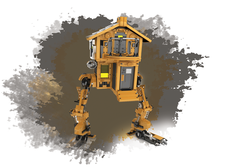MisterHouse is an active, community-driven, open source home automation project
King of the House

MisterHouse offers a practical approach to home automation – if you are ready to get creative and you know a little Perl.
The explosion of Internet of Things (IoT) devices and technologies has renewed interest in a topic that has actually been percolating within the hacker subculture for years: home automation. Why not let your computer serve as a "brain" for your house, turning on and off light switches, adjusting the thermostat, or opening the curtains at the perfect time of day to optimize passive solar energy. Creative coders have been asking themselves these questions since long before the first Raspberry Pi and Arduino boards fell into the hands of amateur home designers.
One tool that has been around for many years as an aid for home automation is a practical and easy-to-learn utility called MisterHouse. MisterHouse offers a structure, and a simple user interface, for Perl scripts that provide home automation functions. You need to know a little about Perl programming to use MisterHouse, but you don't need to be an expert in electronic circuits or embedded systems programming.
Bruce Winter first released MisterHouse to the Usenet newsgroup: comp.home.automation on April 1, 1999. MisterHouse started out as a way for Bruce to manage the environment of his passive solar and south-facing, earth-bermed home. He also built custom curtain controllers, which MisterHouse controlled while monitoring sunlight level, outdoor temperature, and indoor temperature to control the curtains, fans, and a furnace.
[...]
Buy this article as PDF
(incl. VAT)
Buy Linux Magazine
Subscribe to our Linux Newsletters
Find Linux and Open Source Jobs
Subscribe to our ADMIN Newsletters
Support Our Work
Linux Magazine content is made possible with support from readers like you. Please consider contributing when you’ve found an article to be beneficial.

News
-
Parrot OS Switches to KDE Plasma Desktop
Yet another distro is making the move to the KDE Plasma desktop.
-
TUXEDO Announces Gemini 17
TUXEDO Computers has released the fourth generation of its Gemini laptop with plenty of updates.
-
Two New Distros Adopt Enlightenment
MX Moksha and AV Linux 25 join ranks with Bodhi Linux and embrace the Enlightenment desktop.
-
Solus Linux 4.8 Removes Python 2
Solus Linux 4.8 has been released with the latest Linux kernel, updated desktops, and a key removal.
-
Zorin OS 18 Hits over a Million Downloads
If you doubt Linux isn't gaining popularity, you only have to look at Zorin OS's download numbers.
-
TUXEDO Computers Scraps Snapdragon X1E-Based Laptop
Due to issues with a Snapdragon CPU, TUXEDO Computers has cancelled its plans to release a laptop based on this elite hardware.
-
Debian Unleashes Debian Libre Live
Debian Libre Live keeps your machine free of proprietary software.
-
Valve Announces Pending Release of Steam Machine
Shout it to the heavens: Steam Machine, powered by Linux, is set to arrive in 2026.
-
Happy Birthday, ADMIN Magazine!
ADMIN is celebrating its 15th anniversary with issue #90.
-
Another Linux Malware Discovered
Russian hackers use Hyper-V to hide malware within Linux virtual machines.

